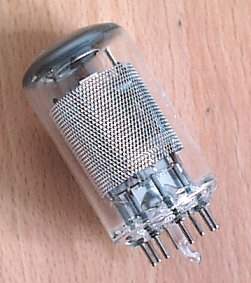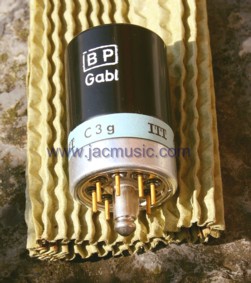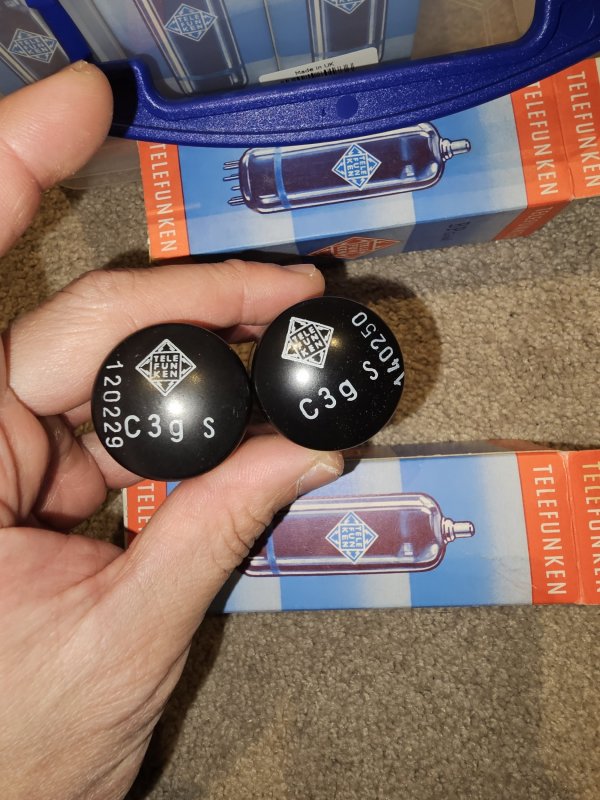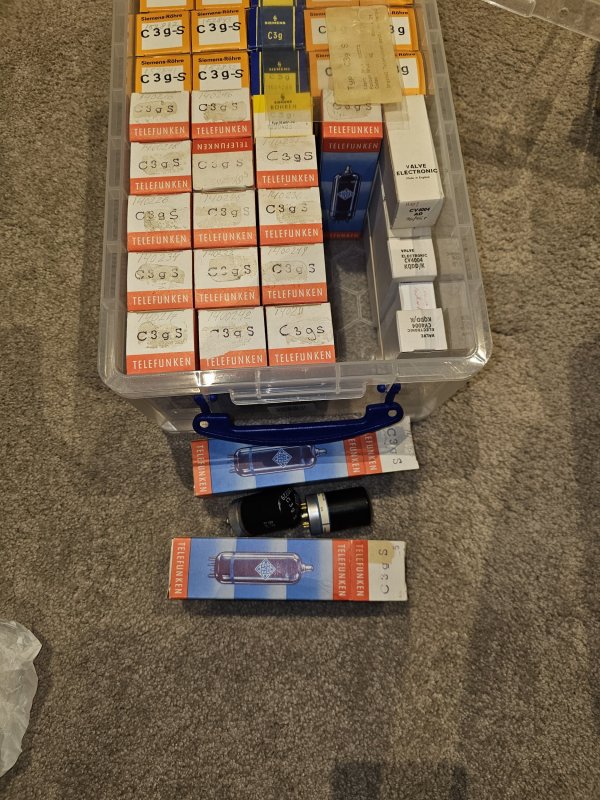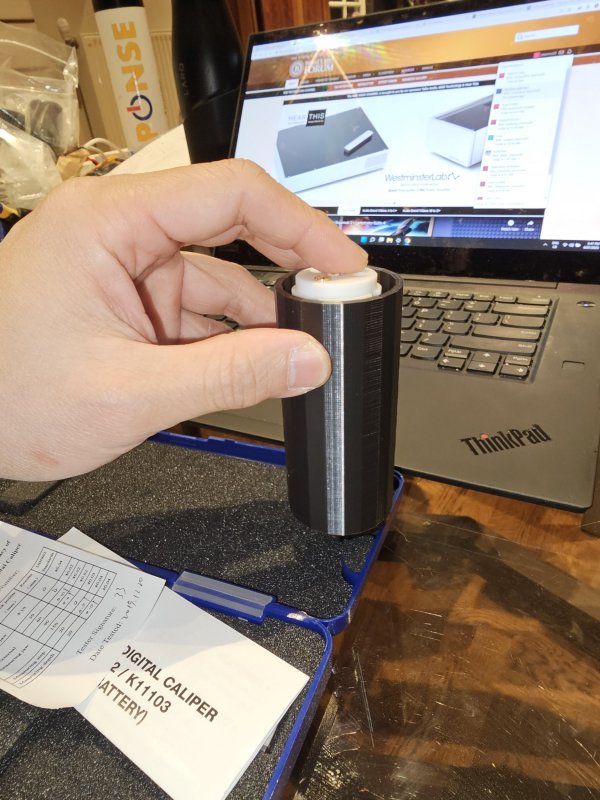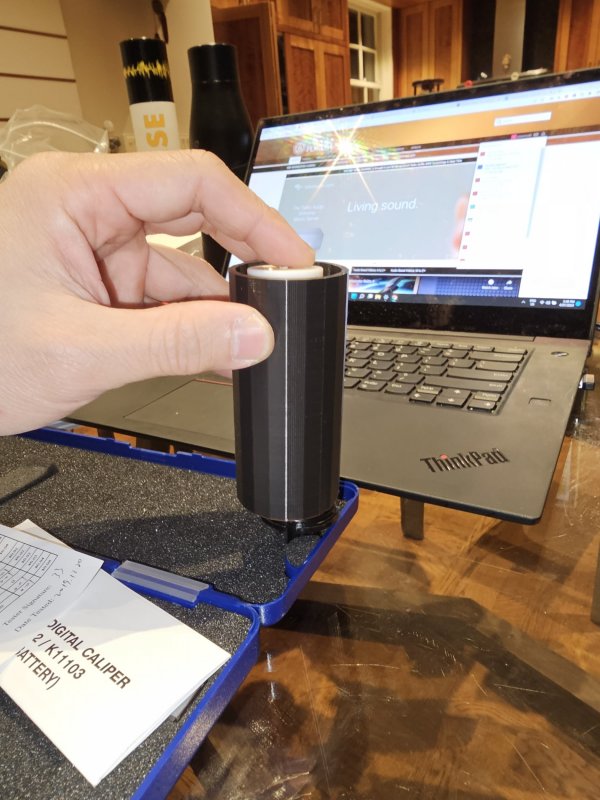Thanks Steve yup the Valvo onesAnd BTW to all reading Ian just found a few more G2504 ( I assume Valvo) I would contact Ian real quick because I can bet you that he’ll sell out real quick. A Valvo and his adapter I’m sure would be quite something. So one stop shopping
LampizatOr Horizon - Tube Rolling Paradise
- Thread starter Golum
- Start date
You are using an out of date browser. It may not display this or other websites correctly.
You should upgrade or use an alternative browser.
You should upgrade or use an alternative browser.
I have been a member of the forum for a while and hope my contributions help as i have leant so much from the ppl around me. Here is something else i hope might be a good contribution to the community
I have been asked many times what i use in my horizon and i use and have tried quite a lot of stuff. I generally tell everyone what i use in the rectifier position and also in the pentodes but not in the input conversion.
After countless hours of experimentation these tips i hope will help you optimise your horizon further
1. We know the horizon has right and left bank of pentodes. the right controls the xlr the left the rca and they are supposed to be multually exclusive with 1 not affecting the sound of the other . That is wrong If you use rca for eg the left bank controls 90% of the sound and the right bank 10% which means you can further modify the textures and tonality . Hence for eg i use the xlr and on the right bank i use the P17c from Francois ( a very very nice guy) and on the left i use the bendix 6384. If you leave one bank empty you are missing out on a chance to further modify the sound
If you use rca for eg the left bank controls 90% of the sound and the right bank 10% which means you can further modify the textures and tonality . Hence for eg i use the xlr and on the right bank i use the P17c from Francois ( a very very nice guy) and on the left i use the bendix 6384. If you leave one bank empty you are missing out on a chance to further modify the sound
2. Rectifiers. The rectifier in the horizon is capacitor smoothed and the capacitor it uses is the mundorf mcap 10uf. Its a mundorf but the lowest spec mcap. If you upgrade that cap alone the rectifier performance will improved heaps. The best mundorf caps are too big. so i suggest something like the evo silver gold and parrallel a few of them in that slot to get 20-30ufs of capacity in there,. This will smooth out the ripple in the full wave rectifier even more
3.Horizon connectors - i use spdif and xlr - these can be swapped out easily to better units. I use the furutech ncfs and again it increased the sound quite a bit. Also upgrading the wire from the spdif on the board to the connector helps as well - i actually used a triple damped and shielded phono wire for this.
4. Grounding plug on the horizon is to chassis and connected to mains ground. Which is why i suspect a lot of ppl dont use it. More manufacturers do this but connecting chassis ground to mains ground means mains ground can pollute your unit. It might be better to seperate chassis ground from mains and connect the ground chassis to a dedicated grounding solution. I say may as i cant be liable for anything here And i am not as experienced in electronics as a lot of other folks are
And i am not as experienced in electronics as a lot of other folks are
5. finally my input conversion tubes that i use....this i have never put on any forum as tubes being subjective i am happy to hear the benefits but dont want any discourse on it. Given the last few conversations - i can see this is a very supportive forum so here it is...
I use dual telefunken C3gs tubes on each socket with a total of 4 tubes. These tubes are hard to find even for the c3g but i use the special version which is the c3gs. You never find this tube out there. the lesser c3g yes but not the s. Some sellers on ebay sell the siemens c3gs but these are not written on the tube and can be a normal c3g in an s box. Telefunken is also better than siemens brand wise as well. I have tried all 4 -siemens, telefunken,. itt lorenz and valvo - telefunken is hands down the best. Adaptors you can get on ebay easy...actually haha i asked the chap to make me one and now he has it for sale on his ebay - good for us both. The adaptor quality from mrsxuling ( the seller i mention above) varies and of the 4 i have 1 doesnt work. so look into it.
Now why did i use the telefunken c3gs some will ask me.....through a friend I know of a telefunken employee once - very old chap and it transpired he has these tubes...so i bought them all . not knowing what i will do with them then ( and bloody expensive they were too) but yet....now i am a very lucky and happy man.
I have been asked many times what i use in my horizon and i use and have tried quite a lot of stuff. I generally tell everyone what i use in the rectifier position and also in the pentodes but not in the input conversion.
After countless hours of experimentation these tips i hope will help you optimise your horizon further
1. We know the horizon has right and left bank of pentodes. the right controls the xlr the left the rca and they are supposed to be multually exclusive with 1 not affecting the sound of the other . That is wrong
2. Rectifiers. The rectifier in the horizon is capacitor smoothed and the capacitor it uses is the mundorf mcap 10uf. Its a mundorf but the lowest spec mcap. If you upgrade that cap alone the rectifier performance will improved heaps. The best mundorf caps are too big. so i suggest something like the evo silver gold and parrallel a few of them in that slot to get 20-30ufs of capacity in there,. This will smooth out the ripple in the full wave rectifier even more
3.Horizon connectors - i use spdif and xlr - these can be swapped out easily to better units. I use the furutech ncfs and again it increased the sound quite a bit. Also upgrading the wire from the spdif on the board to the connector helps as well - i actually used a triple damped and shielded phono wire for this.
4. Grounding plug on the horizon is to chassis and connected to mains ground. Which is why i suspect a lot of ppl dont use it. More manufacturers do this but connecting chassis ground to mains ground means mains ground can pollute your unit. It might be better to seperate chassis ground from mains and connect the ground chassis to a dedicated grounding solution. I say may as i cant be liable for anything here
5. finally my input conversion tubes that i use....this i have never put on any forum as tubes being subjective i am happy to hear the benefits but dont want any discourse on it. Given the last few conversations - i can see this is a very supportive forum so here it is...
I use dual telefunken C3gs tubes on each socket with a total of 4 tubes. These tubes are hard to find even for the c3g but i use the special version which is the c3gs. You never find this tube out there. the lesser c3g yes but not the s. Some sellers on ebay sell the siemens c3gs but these are not written on the tube and can be a normal c3g in an s box. Telefunken is also better than siemens brand wise as well. I have tried all 4 -siemens, telefunken,. itt lorenz and valvo - telefunken is hands down the best. Adaptors you can get on ebay easy...actually haha i asked the chap to make me one and now he has it for sale on his ebay - good for us both. The adaptor quality from mrsxuling ( the seller i mention above) varies and of the 4 i have 1 doesnt work. so look into it.
Now why did i use the telefunken c3gs some will ask me.....through a friend I know of a telefunken employee once - very old chap and it transpired he has these tubes...so i bought them all . not knowing what i will do with them then ( and bloody expensive they were too) but yet....now i am a very lucky and happy man.
From my friend Jac
This article started off with a few pictures I made, about how sexy a C3m tube looks with it's clothes off. I was the first to remove that metal cap, because I wanted to look what's inside. Ever since, the content of this article has been growing. Today, even Yamamoto Soundcraft from Japan, equips their most build amplifier with C3m tubes, without metal cap.
CONTENTS
Telefunken introduces a "new tube" in 1931, the RENS 1820, which was a 20 Volt DC heated tube. It was one the first pentodes.
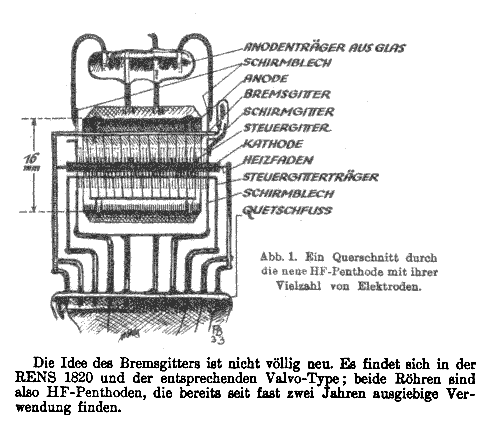
Some say, REND1820 was the beginning of this series. I only can expect it.
C3m was developed in cooperation of the LORENZ company in Esslingen, Germany, with Siemens. Lorenz, later called SEL Lorenz, at that time was a huge manufacturer of telephone systems. They sold their products worldwide, to the German Post, China, and many other countries. Later, as the French Alcatel merged, the the French kept taking away competence and when not much was left, they French lost their interest. I often was at this site in Esslingen myself for business. But we have to say it, Lorenz was one of the designers of the C3m. The original purpose of this tube was described in an article in "Fernmeldetechnische Zeitschrift, July 1952" as a tube for audio and high frequency applications up to 500kHz. So this tube could be directly used to amplify audio signal, and also in carrier systems. (compare it with radio transmission, but via wire, so a modulated carrier signal). At that time the product was the V60 Telephone System by Lorenz.
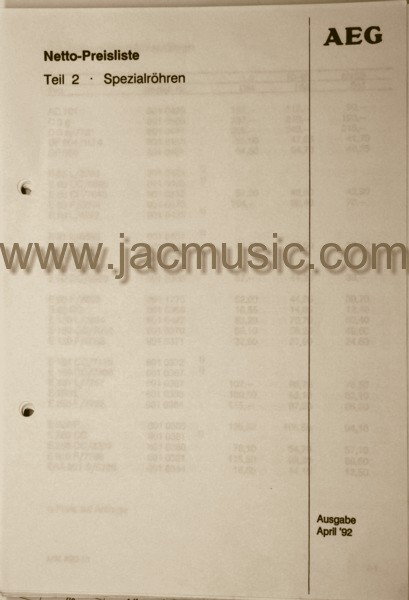
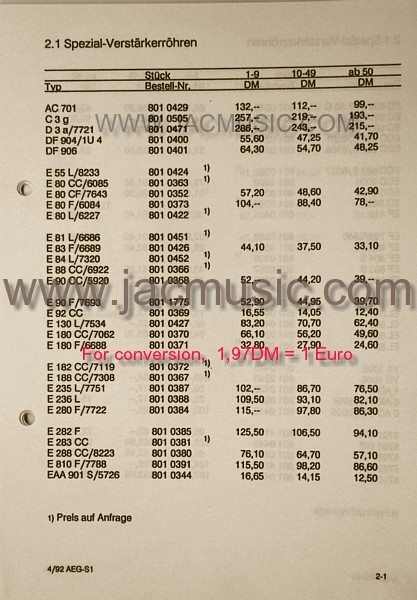
I have the original 1992 price list (not a copy). Here you can see C3g has cost 257DM for one. That is 130 Euro. The factory price for the standard 50pcs box was 4898 Euro. We have not reached this price level yet, but one day it will happen. All great tubes are now more expensive as when new made.
Admitted, in the steel can they are not glowing so nice. Believe me, once you feel these tubes get warm, you start to see them as tubes also.
Portrait of a Tube
Last Update: 03/22/2023 07:36:18Description of the C3g and C3m tube
Perhaps the best small signal pentodes ever madeThis article started off with a few pictures I made, about how sexy a C3m tube looks with it's clothes off. I was the first to remove that metal cap, because I wanted to look what's inside. Ever since, the content of this article has been growing. Today, even Yamamoto Soundcraft from Japan, equips their most build amplifier with C3m tubes, without metal cap.
CONTENTS
HISTORY OF c3m, c3g SERIES
I know not enough about this to really fill this part with best data. So please let me know if something interesting is missing, I will be glad to post it here!Telefunken introduces a "new tube" in 1931, the RENS 1820, which was a 20 Volt DC heated tube. It was one the first pentodes.

Some say, REND1820 was the beginning of this series. I only can expect it.
C3m was developed in cooperation of the LORENZ company in Esslingen, Germany, with Siemens. Lorenz, later called SEL Lorenz, at that time was a huge manufacturer of telephone systems. They sold their products worldwide, to the German Post, China, and many other countries. Later, as the French Alcatel merged, the the French kept taking away competence and when not much was left, they French lost their interest. I often was at this site in Esslingen myself for business. But we have to say it, Lorenz was one of the designers of the C3m. The original purpose of this tube was described in an article in "Fernmeldetechnische Zeitschrift, July 1952" as a tube for audio and high frequency applications up to 500kHz. So this tube could be directly used to amplify audio signal, and also in carrier systems. (compare it with radio transmission, but via wire, so a modulated carrier signal). At that time the product was the V60 Telephone System by Lorenz.
PRICES
The '3' of the part number, I believe is to show they are third generation post tubes. These were low noise tubes, made by Valvo, Siemens and Telefunken, exclusively for the German post and the Lorenz company. The TFK have a nice logo stamped into the metal. Most have a banderols on it, with a series number, but not all of them have this. These were not for sale for other customers. They were used in repeater amplifiers for long distance telephony.

I have the original 1992 price list (not a copy). Here you can see C3g has cost 257DM for one. That is 130 Euro. The factory price for the standard 50pcs box was 4898 Euro. We have not reached this price level yet, but one day it will happen. All great tubes are now more expensive as when new made.
Admitted, in the steel can they are not glowing so nice. Believe me, once you feel these tubes get warm, you start to see them as tubes also.
LOUD NOISES
Who can remember the 1980's with a long distance call from Europe to the USA?
Well, I can myself! In 1986, I worked for Hewlett Packard in Germany and phone call to California would cost 5$ per minute, so 300$ per hour. Which today is expensive but in 1986 that was REALLY expensive. And still the voice on the other end was not loud enough, there was a lot of analog noise on the line, and most of all one second delay. In today's money such a call would cost something like 900$ per hour. And yes, some of the marketing guys had such unavoidable things to do, they just called one hour or longer with their counterparts in California. Because of the bad connection, they started to speak very loud into the phone. That didn't help much against the low volume at the other end, but it did help to shut up other employees. I remember very well, how people in the Hewlett Packard Germany open office sounding so "important", by talking much too loud in English, indicating they were on an expensive long distance call. Some of the marketing people called several times a week, all the year through. That was another world as free calling via the internet. Why I write this? Well in those days, very probably those analog calls passed C3g, and C3m tubes from the German postAnyway this is not what good signal transmission is about, but it was more touching the limits of what was possible with ocean cables. (Read the next part)
ABOUT ELECTRICAL NOISE
If there is one enemy of a long distance call, it's the combination of low signal and noise. But these two things come together, as if they are married. The reason for this is, a long distance telephone cable is a noise generator, and an attenuator at the same time. So after a certain length, the noise gets more and signal gets less. This limits the length of a telephone line, and simply amplifying the low signal at the receiving end, would also amplify the noise. That doesn't help much. So once noise is introduced at low signal, you can't get rid of it any more. Yet going into the cable with very high signal voltage is limited by practical things too. Even going in with hundreds of Volts AC signal, would give only noise at the other end.If this is unclear to you, imagine the following. On a loud market place in the open, somebody shouts a message to you from 20 meters distance. You can understand it, regardless the noise. You could repeat the message, and shout it to the next person also on 20 meter distance. So you are a 'repeater', and with 20 repeaters, you can send a message over 400meter, regardless the high noise level. Without repeaters however, it would be hard to shout a message over 400 meter, but in a terrible market noise, you get a problem with what is called signal to noise ratio. So at 400 meters, suppose you would pick the signal up with a microphone and amplify it, the message would still be gone, it is drowning in noise, and you can't remove the noise any more.
So using repeaters is the only way to pass the message acoustically. Provided no repeater distorts (changes) the message of course. So what is important is no distortion, and repeat the signal before it gets lost in the noise. Without repeaters, this is simply NOT going to work.
You see, with a long distance voice transmission cable, all of this works just the same way. So the only solution is, to re-amplify the signal before it gets too noisy. It increases the maximum length of a cable, by putting in repeaters, by amplifying the signal before the signal-to-noise-ratio (SNR) gets really bad. Doing so, we can overcome distances from one continent to the other. Though practical situations are extremely difficult, and such projects are higher arts of project management. Imagine the weight of such a cable on a ship, or the trouble with tube repeaters in salt water, with a 4000 meters column of water pressure on a box full of electronics. Inaccessible for ever, somewhere between New York and Paris, on the ocean floor. You would want such electronics to WORK and not fail for silly reasons.
Going further back to the 1960's, this had to be done with tube equipment. Of course they tried to use as little repeaters as possible. The ideal repeater amplifier adds no noise, has no distortion, draws no current, is very small, needs no maintenance, and works for ever.
A partial solution you get from adding an auto transformer (Pupin coils) at certain distances, but there comes a moment where you need active amplification. So the engineers desired the 'ideal' tube. However, these ideal requirements do not go together well: High Amplification, low noise, long life, no distortion, small size, low filament power. As most of you know, a tube with more heater temperature will have better electrical performance, and more lifetime, but uses more power too. So the solution is a bit more complicated than you might think. Tubes that meet all of the requirements are masterpieces of design, and non-commercial since they are EXPENSIVE. The price of C3g was 295DM for one tube. So that's about 200$ for one tube. In those days you could buy a new car for 5000$. So a standard 50-Pack of those had the price of two new cars. You really need to imagine that. So obviously, cost was no issue with those, and that's logical since with those you could for instance work with a cable that had a bit higher loss, and add repeaters inside to compensate that. Imagine 1000km (1 Million meter) of cable can be made 20% lower cost, who cares if the tube that makes this possible costs 200$. This is the world of C3g, C3m, C3o. Sorry for this way of speaking, but I just wanted to bring my point, these tubes are not just any tubes.
Today, I think most of the secrets of how to make C3-tubes are gone with the wind, but at least we can still buy those miracles of design art from new old stock. If the days come where we only can buy used ones, it's no problem too, since the end-of-life is clearly specified in the datasheets. So you can always tell if the tubes are still good. I found the Funke W19 tester very reliable in picking out used tubes with good lifetime in it.
These German post tubes were first designed in the heads of the amplifier engineers, that finally wanted to have something without compromise. The engineers just said, what must an ideal tube have, and then let the tube factories try to make it.
Here is what they came up with:
- Highest amplification
- Lowest low noise
- Lowest microphonics effects
- Higher lifetime than commercial tubes
- Stand-by possibility (very few tubes have that)
- Metal shielding
- If a pentode is triode connected, it must have curves like a real very good triode
- Fully complete datasheet, leaving NO DATA out.
- Optional: Individual series number on each tube
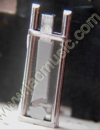 Let me bring to your attention, the C3g at it's introduction in 1952 was the fist Frame grid tube, and it was not available commercially. In short, a frame grid means the grid wire is not self supporting, but is wound around a hard metal frame. Like this, they could use wire which is so exceptionally thin, as it was never possible before. You cannot see this wire with the bare eye. This is quite strange to observe, when you take a frame grid tube apart. The grid wire is there of course, and you can 'see' there is something there, that you can look through, but you cannot see what that is. As if there is a gold colored, transparent layer, that you can see through. Things looks a bit 'unsharp' when you look though. Like the low resolution picture below. It is just like this when you look at a frame grid wit the bare eye. Then, if you click the picture it gets enlarged, and you can see the wires. This technology is more expensive, and was used for very few tube types, perhaps 100 only. Given the 10's of thousands other tube types ever made, this is not much.
Let me bring to your attention, the C3g at it's introduction in 1952 was the fist Frame grid tube, and it was not available commercially. In short, a frame grid means the grid wire is not self supporting, but is wound around a hard metal frame. Like this, they could use wire which is so exceptionally thin, as it was never possible before. You cannot see this wire with the bare eye. This is quite strange to observe, when you take a frame grid tube apart. The grid wire is there of course, and you can 'see' there is something there, that you can look through, but you cannot see what that is. As if there is a gold colored, transparent layer, that you can see through. Things looks a bit 'unsharp' when you look though. Like the low resolution picture below. It is just like this when you look at a frame grid wit the bare eye. Then, if you click the picture it gets enlarged, and you can see the wires. This technology is more expensive, and was used for very few tube types, perhaps 100 only. Given the 10's of thousands other tube types ever made, this is not much.Read here about frame grid tubes.
NOTE that in the 1980's when tubes were obsoleted, there was a lifetime-buy option by Siemens for the German post. It stretched over a few years. It is from this period that BIG lots of tubes were made, and just stored for later service of old hardware. Because of the high manufacturing numbers, these were very good quality. Popular tubes were C3g, C3m, and also Siemens ECC801S of remarkable good quality. Probably many other tubes as well, it's just these three Types I ran across myself. Something similar happened in the USA, and from that period many very good 6922, 5687, 12AT7 and 5751 are around. These are those tubes with a barcode label on them.
Then, the whole hardware developed so quickly after the digital multiplexing was used, and analog repeaters were taken out of service everywhere sooner than expected. And so, a six digit number of those tubes were stored and never used. Through the years these were sold, and it seems the German government stocks of C3g and C3m have dried up since 2005 or so. However, these tubes are always somewhere, and find the path to their end user.
Check for a 16 pages (!!) datasheet at our website / under Techcorner
I guess they came up with some more nasty things, that the tube manufacturers all had to comply with. Just look at how nice the triode connected curves are. These curves are so linear, I think there are very few triodes excising with such nice curves!
What to do, if you don't like the metal cap?
You can take off the metal housing, and inside is a very nice glass tube!
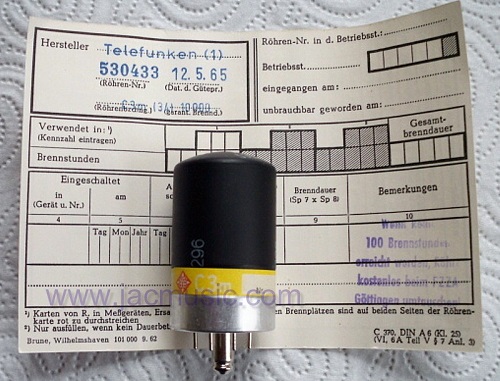
C3g Inside.
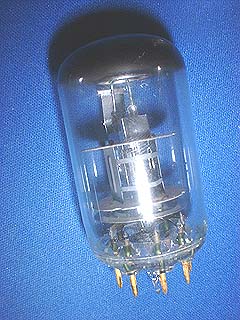
Zirconium + Barium Getter
We are lucky to have only the C3g and C3m version with the additional zirconium getter. So that is additional to the Barium getter ring (or plate).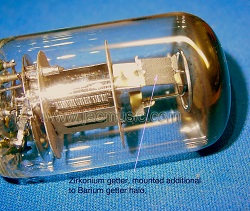 A Zirconium getter is expensive and it works like this: A Barium getter has most of its function during the short moment (a few seconds) that it is flashed during production, so when it is in the tube in the form of a cloud, while being transferred out of the getter halo, and condensing on the tube glass. This cloud, at the moment it exists inside the tube, absorbs (at that short moment) almost anything whatsoever. Then, after it will be condensed on the glass, the Barium getter is only conditional active. Like during great heat such as with KT88 tubes. However, little tubes like C3g cannot really use the getter anymore after activation. Of course there are some remaining functions left, amongst which is dust catching (yes!) but maintaining extremely high vacuum is not done. Here is where the Zirconium getter comes in. These need no flashing. They start to absorb gasses, whenever they have a sufficient temperature, and all you need to do is, mount it at a warm place. So really top class tubes have both getters. These tubes used to cost 295 DM when new, I have seen an original price list myself.
A Zirconium getter is expensive and it works like this: A Barium getter has most of its function during the short moment (a few seconds) that it is flashed during production, so when it is in the tube in the form of a cloud, while being transferred out of the getter halo, and condensing on the tube glass. This cloud, at the moment it exists inside the tube, absorbs (at that short moment) almost anything whatsoever. Then, after it will be condensed on the glass, the Barium getter is only conditional active. Like during great heat such as with KT88 tubes. However, little tubes like C3g cannot really use the getter anymore after activation. Of course there are some remaining functions left, amongst which is dust catching (yes!) but maintaining extremely high vacuum is not done. Here is where the Zirconium getter comes in. These need no flashing. They start to absorb gasses, whenever they have a sufficient temperature, and all you need to do is, mount it at a warm place. So really top class tubes have both getters. These tubes used to cost 295 DM when new, I have seen an original price list myself.Zirconium getters can have various appearance. Some can be small square plates as you see here. With other tubes like EL503 they are hidden inside the plates. Tubes like 845 have Zirconium absorbed inside the graphite. With the 845 the Barium flash you see, is only used for initial vacuum during production. Maintenance of the vacuum is done by the Zirconium getter.
A Zirconium getter is expensive and it works like this: A Barium getter has most of its function during the short moment (a few seconds) that it is flashed during production, so when it is in the tube in the form of a cloud, while being transferred out of the getter halo, and condensing on the tube glass. This cloud, at the moment it exists inside the tube, absorbs (at that short moment) almost anything whatsoever. Then, after it will be condensed on the glass, the Barium getter is only conditional active. Like during great heat such as with KT88 tubes. However, little tubes like C3g cannot really use the getter anymore after activation. Of course there are some remaining functions left, amongst which is dust catching (yes!) but maintaining extremely high vacuum is not done. Here is where the Zirconium getter comes in. These need no flashing. They start to absorb gasses, whenever they have a sufficient temperature, and all you need to do is, mount it at a warm place. So really top class tubes have both getters. These tubes used to cost 295 DM when new, I have seen an original price list myself.
Zirconium getters can have various appearance. Some can be small square plates as you see here. With other tubes like EL503 they are hidden inside the plates. Tubes like 845 have Zirconium absorbed inside the graphite. With the 845 the Barium flash you see, is only used for initial vacuum during production. Maintenance of the vacuum is done by the Zirconium getter.
Cap Removal
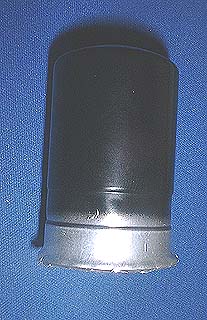
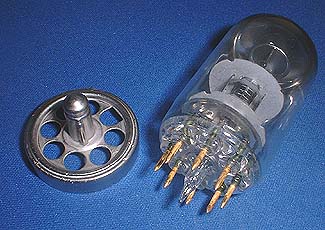
After removing the cap, the part with the guide pin falls of, and I would recommend to glue this back on. Put two components glue on the sides. Important: Do not fill glue in the center adjustment hole. That will eventually break the glass pipe in the middle. Note that one pin hole is square, and is used for positioning. Also you can now still use the guide pin to ground this part, and one way or another that is simply good, because the ground plane comes now closest possible to the hum sensitive grid.
Note: Hum is greatly reduced by using a low driver impedance. Also, when working at very low signal level, be ware that with all tubes, the grid noise, generated by the tube itself, is actually attenuated (better call it loaded), when using a very low impedance driver circuit. So the noise free signal from the driver and the noise from the tube, will not simply add up, but only one of the two will win. And that will be the driver signal, when it is low impedance. This has nothing to do with the C3g or C3m itself, but since C3g, C3m can be used in pre amplifiers, or even phono amplifiers, I think it is meaningful to mention this here still.
I don’t mind the commentary on the looks of the adapter, but criticizing the sound without hearing it is not helpful. It. Is not a “flavor.” It isn’t that expensive, relatively, so why not give one a try? It was a significant uplift in my system. Obviously, dude knows what he is doing—see above…. I compared it to two adapters, a cheap one and the nice black one with upgraded parts. It is significantly better.
PS he is also a great guy and kind dude. This isn’t a cash grab and he obviously isn’t going to sell many of them. He is trying to contribute and improve the SQ of fellow Horizon users. We should support that.
It is obviously handmade/homemade and not intended as a commercial product so why judge it thus? If it was a consumer product by a brand, then indeed it should look cool, but as a homemade tube adapter shared between friends, it seems moot to complain. Just try it and see if you like it….
It is obviously handmade/homemade and not intended as a commercial product so why judge it thus? If it was a consumer product by a brand, then indeed it should look cool, but as a homemade tube adapter shared between friends, it seems moot to complain. Just try it and see if you like it….
Last edited:
Steve Williams
Site Founder, Site Co-Owner, Administrator
I said a few posts back that they are reasonably priced plus I think I motivated Ian to come up with a v2. I guess you missed the gist of my post. Whether it's a flavor or call it whatever you will, for me it has never ever been a thing about sound quality but rather the visual. As far as helping Ian out, trust me when I tell you he's done just fine by mePS he is also a great guy and kind dude. This isn’t a cash grab and he obviously isn’t going to sell many of them. He is trying to contribute and improve the SQ of fellow Horizon users. We should support that.
It is obviously handmade/homemade and not intended as a commercial product so why judge it thus? If it was a consumer product by a brand, then indeed it should look cool, but as a homemade tube adapter shared between friends, it seems moot to complain. Just try it and see if you like it….
Thank you Sampa and Steve - am definitely feeling the love here
- am definitely feeling the love here Amazing to have such a wonderful community
Amazing to have such a wonderful community  Will definately work on a v2 Steve
Will definately work on a v2 Steve
Horizon community is the best for sure. Everyone here is epic and so helpful
This is very intriguing regarding the C3G tube. I use the C3M in my Preamp and the Telefunken C3M has proven to be the most revealing. What are you using as an adapter for the C3G? BTW, thanks for sharing all your hard earned insight.Let me bring to your attention, the C3g at it's introduction in 1952 was the fist Frame grid tube, and it was not available commercially. In short, a frame grid means the grid wire is not self supporting, but is wound around a hard metal frame. Like this, they could use wire which is so exceptionally thin, as it was never possible before. You cannot see this wire with the bare eye. This is quite strange to observe, when you take a frame grid tube apart. The grid wire is there of course, and you can 'see' there is something there, that you can look through, but you cannot see what that is. As if there is a gold colored, transparent layer, that you can see through. Things looks a bit 'unsharp' when you look though. Like the low resolution picture below. It is just like this when you look at a frame grid wit the bare eye. Then, if you click the picture it gets enlarged, and you can see the wires. This technology is more expensive, and was used for very few tube types, perhaps 100 only. Given the 10's of thousands other tube types ever made, this is not much.
Read here about frame grid tubes.
NOTE that in the 1980's when tubes were obsoleted, there was a lifetime-buy option by Siemens for the German post. It stretched over a few years. It is from this period that BIG lots of tubes were made, and just stored for later service of old hardware. Because of the high manufacturing numbers, these were very good quality. Popular tubes were C3g, C3m, and also Siemens ECC801S of remarkable good quality. Probably many other tubes as well, it's just these three Types I ran across myself. Something similar happened in the USA, and from that period many very good 6922, 5687, 12AT7 and 5751 are around. These are those tubes with a barcode label on them.
Then, the whole hardware developed so quickly after the digital multiplexing was used, and analog repeaters were taken out of service everywhere sooner than expected. And so, a six digit number of those tubes were stored and never used. Through the years these were sold, and it seems the German government stocks of C3g and C3m have dried up since 2005 or so. However, these tubes are always somewhere, and find the path to their end user.
Check for a 16 pages (!!) datasheet at our website / under Techcorner
I guess they came up with some more nasty things, that the tube manufacturers all had to comply with. Just look at how nice the triode connected curves are. These curves are so linear, I think there are very few triodes excising with such nice curves!
What to do, if you don't like the metal cap?
You can take off the metal housing, and inside is a very nice glass tube!
C3g Inside.
Look at the two round plates above the pins. The lowest is a metal shield (outside connected) for lower hum. The other is the mica. The anodes are open from the sides. This open construction is the best for finest linearity. It allowed plate distance adjustments after the tube was assembled. This noncommercial construction was used already in DHT post tubes from the 1930's
Zirconium + Barium Getter
We are lucky to have only the C3g and C3m version with the additional zirconium getter. So that is additional to the Barium getter ring (or plate).
A Zirconium getter is expensive and it works like this: A Barium getter has most of its function during the short moment (a few seconds) that it is flashed during production, so when it is in the tube in the form of a cloud, while being transferred out of the getter halo, and condensing on the tube glass. This cloud, at the moment it exists inside the tube, absorbs (at that short moment) almost anything whatsoever. Then, after it will be condensed on the glass, the Barium getter is only conditional active. Like during great heat such as with KT88 tubes. However, little tubes like C3g cannot really use the getter anymore after activation. Of course there are some remaining functions left, amongst which is dust catching (yes!) but maintaining extremely high vacuum is not done. Here is where the Zirconium getter comes in. These need no flashing. They start to absorb gasses, whenever they have a sufficient temperature, and all you need to do is, mount it at a warm place. So really top class tubes have both getters. These tubes used to cost 295 DM when new, I have seen an original price list myself.
Zirconium getters can have various appearance. Some can be small square plates as you see here. With other tubes like EL503 they are hidden inside the plates. Tubes like 845 have Zirconium absorbed inside the graphite. With the 845 the Barium flash you see, is only used for initial vacuum during production. Maintenance of the vacuum is done by the Zirconium getter.
A Zirconium getter is expensive and it works like this: A Barium getter has most of its function during the short moment (a few seconds) that it is flashed during production, so when it is in the tube in the form of a cloud, while being transferred out of the getter halo, and condensing on the tube glass. This cloud, at the moment it exists inside the tube, absorbs (at that short moment) almost anything whatsoever. Then, after it will be condensed on the glass, the Barium getter is only conditional active. Like during great heat such as with KT88 tubes. However, little tubes like C3g cannot really use the getter anymore after activation. Of course there are some remaining functions left, amongst which is dust catching (yes!) but maintaining extremely high vacuum is not done. Here is where the Zirconium getter comes in. These need no flashing. They start to absorb gasses, whenever they have a sufficient temperature, and all you need to do is, mount it at a warm place. So really top class tubes have both getters. These tubes used to cost 295 DM when new, I have seen an original price list myself.
Zirconium getters can have various appearance. Some can be small square plates as you see here. With other tubes like EL503 they are hidden inside the plates. Tubes like 845 have Zirconium absorbed inside the graphite. With the 845 the Barium flash you see, is only used for initial vacuum during production. Maintenance of the vacuum is done by the Zirconium getter.
Cap Removal
It is really a matter of taste of you want to remove the cap or not. The optical advantage is beautiful. For myself, knowing what is inside, for me it is a tube as well also with the cap in place. Make good note, what the cap is intended for: It is an electrical shield for the tube, and the cap is electrically connected to the metal guide pin, in the center. So via the tube socket you can ground the cap. This is definitely a great advantage in case of very low signal applications. For a driver or headphone, removing the cap for optical reasons is sure nice. You can lift off the edges of the cap relatively easy, it is aluminum, and not aggressively attached or kitted. Also the tube glass will not break easily, because the location is the tube base, and this is pretty thick material. Yet, it is possible to break the glass still when you do not patiently peel the cap away.

After removing the cap, the part with the guide pin falls of, and I would recommend to glue this back on. Put two components glue on the sides. Important: Do not fill glue in the center adjustment hole. That will eventually break the glass pipe in the middle. Note that one pin hole is square, and is used for positioning. Also you can now still use the guide pin to ground this part, and one way or another that is simply good, because the ground plane comes now closest possible to the hum sensitive grid.
Note: Hum is greatly reduced by using a low driver impedance. Also, when working at very low signal level, be ware that with all tubes, the grid noise, generated by the tube itself, is actually attenuated (better call it loaded), when using a very low impedance driver circuit. So the noise free signal from the driver and the noise from the tube, will not simply add up, but only one of the two will win. And that will be the driver signal, when it is low impedance. This has nothing to do with the C3g or C3m itself, but since C3g, C3m can be used in pre amplifiers, or even phono amplifiers, I think it is meaningful to mention this here still.
this oneThis is very intriguing regarding the C3G tube. I use the C3M in my Preamp and the Telefunken C3M has proven to be the most revealing. What are you using as an adapter for the C3G? BTW, thanks for sharing all your hard earned insight.

1pc Gold plated Dual C3G Instead 6SN7 6N8P B65 tube converter adapter | eBay
Every product will be tested before we send out.
www.ebay.com
I previously mentioned using a " carbon fiber sleeve" similar to the ends of a Shunyata power cable would look nicer than the stainless mesh currently used in the adapter
Steve Williams
Site Founder, Site Co-Owner, Administrator
Im betting Ian is hard at work with v2 of his adapterI previously mentioned using a " carbon fiber sleeve" similar to the ends of a Shunyata power cable would look nicer than the stainless mesh currently used in the adapter
As long as your dacs handle a 5u4g yup it willSilly question, but would this adapter and related rectifier benefit other Lampi DACs as well? Some of us aren't fortunate enough to be viewing a Horizon in person...
DefinatelyIm betting Ian is hard at work with v2 of his adapter
V2 comes with a Shroud - looks better and doesnt affect the sound. The shroud is placed over the adaptor once tehe adaptor is in place and then you attach the tube to the adaptor. Any thoughts? the white line in the photos is the flash. the unit is all black
Attachments
@plasmod3 - great work Ian and thanks for sharing. I did try the c3g in my Baltic but possibly with the wrong adapter (single tube Woo type version) but the gain was decimated to the point of near inaudibility. Another similar telephony amplification tube which might be worth checking out is the e83f.
Similar threads
- Replies
- 28
- Views
- 5K
- Replies
- 8
- Views
- 2K
- Replies
- 60
- Views
- 6K
- Replies
- 19
- Views
- 4K
| Steve Williams Site Founder | Site Owner | Administrator | Ron Resnick Site Owner | Administrator | Julian (The Fixer) Website Build | Marketing Managersing |











